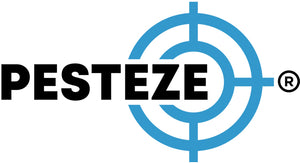TOP CLUES THAT ANIMALS ARE NESTING NEAR YOU

TOP CLUES THAT ANIMALS ARE NESTING NEAR YOU
SUMMARY
Identifying signs of animals nesting nearby helps prevent damage and keeps your home safe. Early detection allows for humane control before problems escalate.
FEATURES
-
Common nesting signs to watch for
-
Types of animals that commonly nest near homes
-
How nesting impacts your property
-
Simple ways to confirm nesting activity
-
Preventive steps to discourage nesting
DESCRIPTION
Animals often seek safe, quiet spots to build nests close to human homes, especially during breeding seasons. Recognizing nesting signs early—like unusual noises, nesting materials, or visible dens—can help you act quickly. This prevents damage to structures and reduces the risk of unwanted animal encounters.
SIGNS OF NESTING ANIMALS
Unusual Noises: Scratching, chirping, or rustling sounds in walls, attics, or under decks indicate nesting activity.
Nesting Materials: Found piles of leaves, twigs, grass, or shredded fabric near your home can signal nests.
Visible Nests or Dens: Look for nests in hidden spots like attics, vents, bushes, or hollow trees close to your property.
Animal Sightings: Frequent appearances of animals carrying food or nesting material point to active nesting nearby.
Damage or Odors: Stains, droppings, or musky smells near entry points often accompany nesting sites.
HOW TO CONFIRM AND MANAGE NESTING
Regular Inspections: Check common nesting spots during spring and early summer when animals breed most actively.
Use Motion-Activated Cameras: Monitor suspected areas to verify nesting without disturbing animals.
Seal Entry Points: Close gaps or holes around your home to prevent animals from settling inside.
Remove Nesting Materials: Safely clean up debris or old nests once animals have left to discourage reuse.
Seek Professional Help: For persistent or protected species, contact animal control experts for safe removal.
- Medha samanu


Comments 0